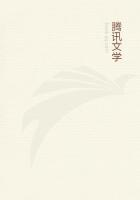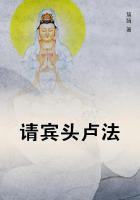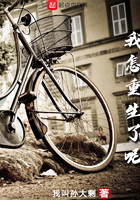On October 27th she fancied she had labor pains and went to the Lariboisiere Maternite, where, after a careful examination, three fetal poles were elicited, and she was told, to her surprise, of the probability of triplets. At 6 P.M., November 13th, the pains of labor commenced. Three hours later she was having great dyspnea with each pain. This soon assumed a fatal aspect and the midwife attempted to resuscitate the patient by artificial respiration, but failed in her efforts, and then she turned her attention to the fetuses, and, one by one, she extracted them in the short space of five minutes; the last one was born twelve minutes after the mother's death. They all lived (the first two being females), and they weighed from 4 1/4 to 6 1/2 pounds.
Considerable attention has been directed to the advisability of accelerated and forced labor in the dying, in order that the child may be saved. Belluzzi has presented several papers on this subject. Csurgay of Budapest mentions saving the child by forced labor in the death agonies of the mother. Devilliers considers this question from both the obstetric and medicolegal points of view. Hyneaux mentions forcible accouchement practised on both the dead and the dying. Rogowicz advocates artificial delivery by the natural channel in place of Cesarian section in cases of pending or recent death, and Thevenot discussed this question at length at the International Medico-Legal Congress in 1878. Duer presented the question of postmortem delivery in this country.
Kelly reports the history of a woman of forty who died in her eighth pregnancy, and who was delivered of a female child by version and artificial means. Artificial respiration was successfully practised on the child, although fifteen minutes had elapsed from the death of the mother to its extraction. Driver relates the history of a woman of thirty-five, who died in the eighth month of gestation, and who was delivered postmortem by the vagina, manual means only being used. The operator was about to perform Cesarean section when he heard the noise of the membranes rupturing. Thornton reports the extraction of a living child by version after the death of the mother. Aveling has compiled extensive statistics on all varieties of postmortem deliveries, collecting 44 cases of spontaneous expulsion of the fetus after death of the mother.
Aveling states that in 1820 the Council of Cologne sanctioned the placing of a gag in the mouth of a dead pregnant woman, thereby hoping to prevent suffocation of the infant, and there are numerous such laws on record, although most of them pertain to the performance of Cesarean section immediately after death.
Reiss records the death of a woman who was hastily buried while her husband was away, and on his return he ordered exhumation of her body, and on opening the coffin a child's cry was heard. The infant had evidently been born postmortem. It lived long afterward under the name of "Fils de la terre." Willoughby mentions the curious instance in which rumbling was heard from the coffin of a woman during her hasty burial. One of her neighbors returned to the grave, applied her ear to the ground, and was sure she heard a sighing noise. A soldier with her affirmed her tale, and together they went to a clergyman and a justice, begging that the grave be opened. When the coffin was opened it was found that a child had been born, which had descended to her knees. In Derbyshire, to this day, may be seen on the parish register: "April ye 20, 1650, was buried Emme, the wife of Thomas Toplace, who was found delivered of a child after she had lain two hours in the grave."Johannes Matthaeus relates the case of a buried woman, and that some time afterward a noise was heard in the tomb. The coffin was immediately opened, and a living female child rolled to the feet of the corpse. Hagendorn mentions the birth of a living child some hours after the death of the mother. Dethardingius mentions a healthy child born one-half hour after the mother's death. In the Gentleman's Magazine there is a record of an instance, in 1759, in which a midwife, after the death of a woman whom she had failed to deliver, imagined that she saw a movement under the shroud and found a child between its mother's legs. It died soon after. Valerius Maximus says that while the body of the mother of Gorgia Epirotas was being carried to the grave, a loud noise was heard to come from the coffin and on examination a live child was found between the thighs,--whence arose the proverb: "Gorgiam prius ad funus elatum, quam natum fuisse."Other cases of postmortem delivery are less successful, the delivery being delayed too late for the child to be viable. The first of Aveling's cases was that of a pregnant woman who was hanged by a Spanish Inquisitor in 1551 While still hanging, four hours later, two children were said to have dropped from her womb. The second case was of a woman of Madrid, who after death was shut in a sepulcher. Some months after, when the tomb was opened, a dead infant was found by the side of the corpse.
Rolfinkius tells of a woman who died during parturition, and her body being placed in a cellar, five days later a dead boy and girl were found on the bier. Bartholinus is accredited with the following: Three midwives failing to deliver a woman, she died, and forty-eight hours after death her abdomen swelled to such an extent as to burst her grave-clothes, and a male child, dead, was seen issuing from the vagina. Bonet tells of a woman, who died in Brussels in 1633, who, undelivered, expired in convulsions on Thursday. On Friday abdominal movements in the corpse were seen, and on Sunday a dead child was found hanging between the thighs.


